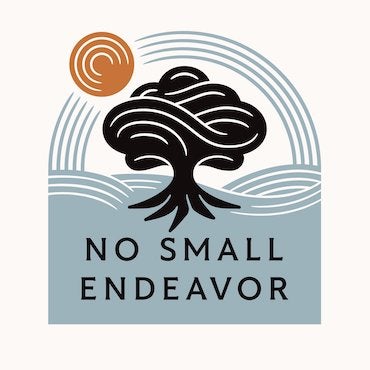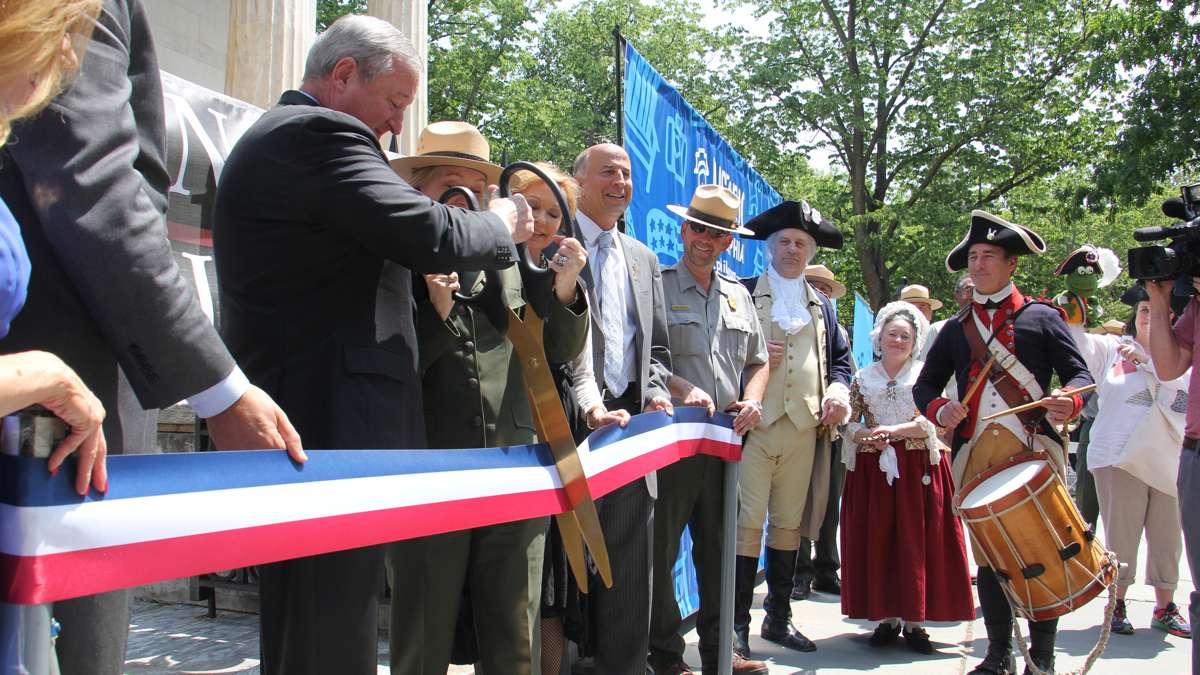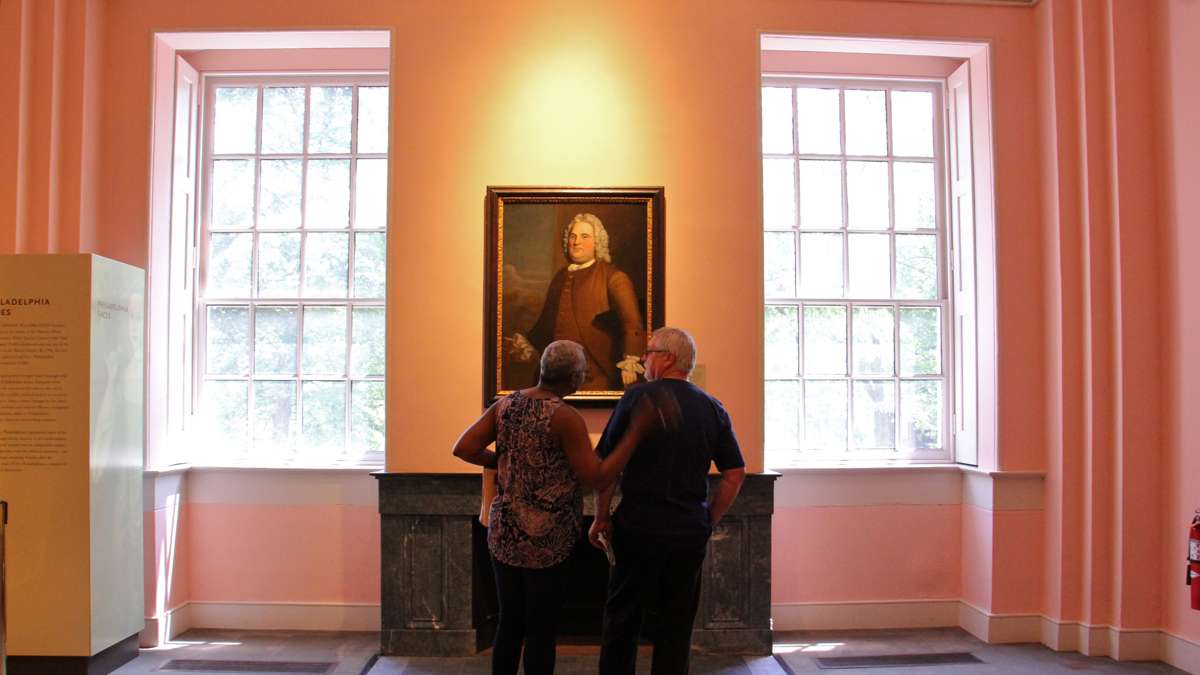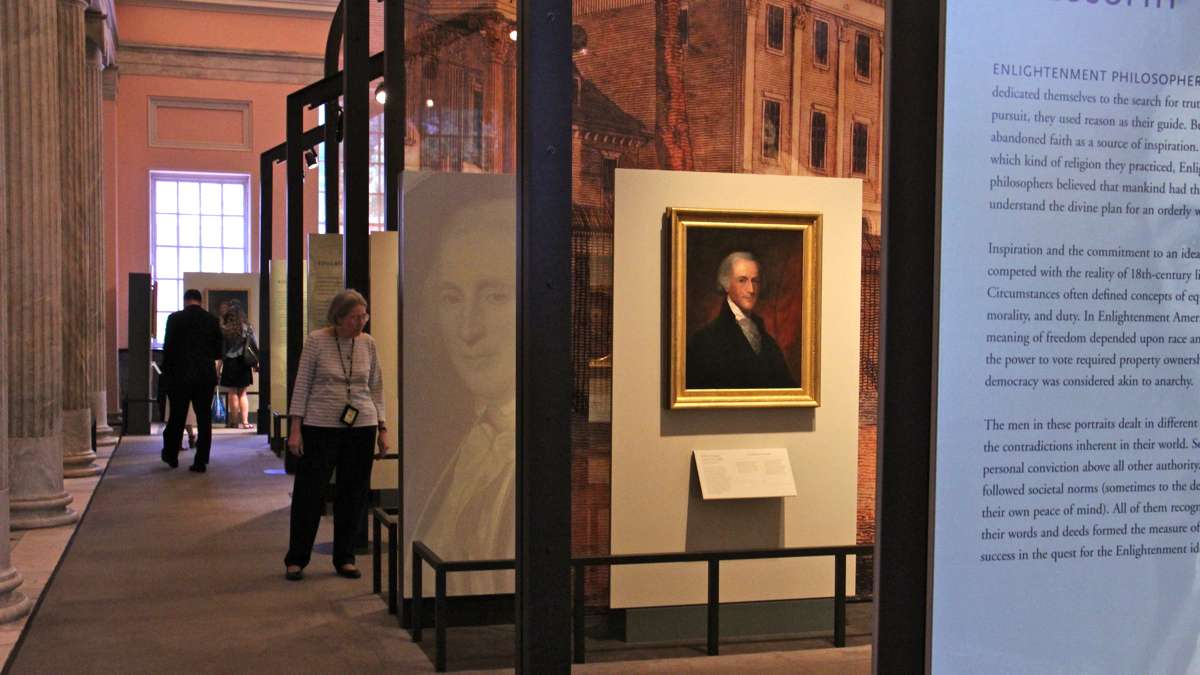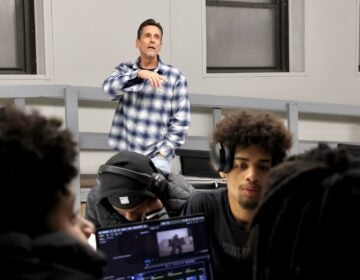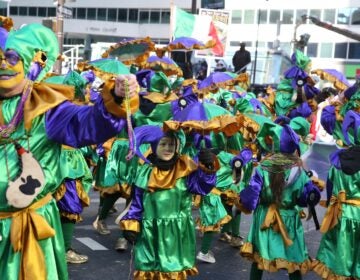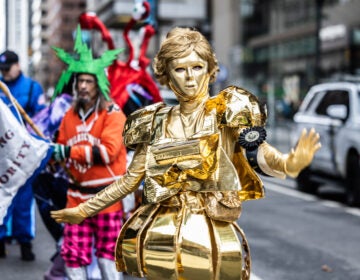Historic Second Bank reopens with portraits of famous Philadelphians [photos]
One of Philadelphia’s often-overlooked historic attractions has reopened for the summer season. The Second Bank of the United States, housing an historic collection of American portraits, closed last year after a fire broke out in the air ducts of the climate-control system.
The fire did little damage, but neatly distributed soot throughout the building at Fifth and Chestnut streets. A thin layer of ash covered every surface, including the 185 painted portraits of Founding Fathers and their contemporaries, many done by Charles Willson Peale.
After months of cleaning, the building has reopened.
“Now it’s all refreshed and new,” said curator Karie Diethorn, standing inside the pink plaster walls of the bank, which used to handle all the government’s fiscal transactions in the early 19th century. The building is now a gallery space for Independence National Historic Park’s art collection.
Diethorn showed off four new acquisitions, including a picture of Nicholas Biddle, the last president of the Second Bank. Biddle was many things: a lawyer, publisher, child prodigy, diplomat, but perhaps most significantly the last president of the Second Bank, sitting in the chair in 1836 when President Andrew Jackson forcefully decentralized the nation’s banking system.
The 1836 portrait was painted by Rembrandt Peale, son of Charles Willson Peale, on whose collection this entire exhibition is based. It is accompanied by a portrait of Biddle’s wife, Jane Margaret Craig. The Biddle family, still prominent in Philadelphia, donated the pair to the Second Bank.
The portrait gallery has also acquired a picture of a little-known merchant from the late 17th century, Isaac Franks. He was a prominent businessman and the first Jewish man in Pennsylvania to be named a notary public. Franks owned a large estate in then-bucolic Germantown, which he rented to George Washington so the president could escape the outbreak of yellow fever downtown.
“We don’t often think of Washington and the founding people as part of a larger society. We think of them up on a pedestal and doing everything by themselves,” said Diethorn. “But the connections they had with one another — through military service, through school, through family, through business — those kinds of elaborate networks are what we study here at Independence.”
Another new portrait in the gallery, also by Rembrandt Peale, is of a 3-year-old boy named Samuel Buckley Morris, scion of another prominent Philadelphia family who would grow up to own the same Germantown estate that was once George Washington’s summer retreat.
A descendant of Samuel Buckley Morris donated the estate, nicknamed the Germantown White House, to the National Park Service in 1948. It is now part of Independence National Historic Park’s network of historic houses.
WHYY is your source for fact-based, in-depth journalism and information. As a nonprofit organization, we rely on financial support from readers like you. Please give today.
